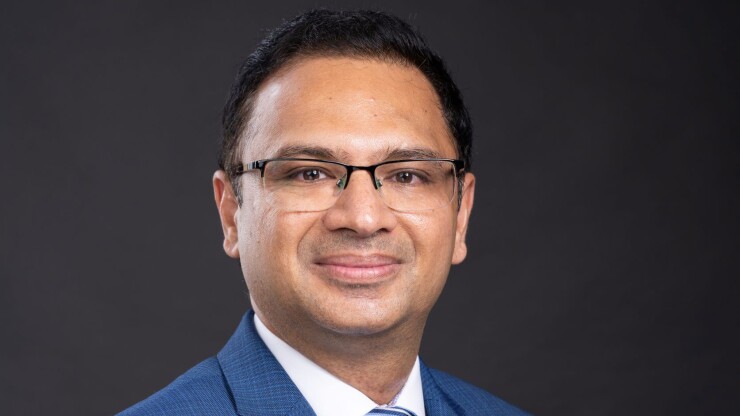Eltropy, a 9-year-old digital communications provider that primarily serves credit unions, is eager to raise its profile among community banks.
To this end, the contact center vendor is bulking up through acquisition. It purchased the video banking provider POPi/o in June, and last month it inked a deal to buy Marsview and its conversational intelligence platform. Financial terms were not disclosed for either transaction.
The acquisitions come as bank and credit union contact centers wrestle with rising volumes, a COVID-era legacy reflecting the shift in customer preferences to online and mobile channels and away from traditional branch banking.
"We've seen about a 20% increase or so in our volumes between 2021 and 2022, and they were up about the same in the first year of" the COVID pandemic,
Recent research by Forrester indicated
"We never closed our branches, but we did limit the number of folks that could be in them at any time," Sultemeier said. "Some people just weren't comfortable, so they used other means. Now they've gotten comfortable with those other means."

Customers at D.L. Evans Bank in Burley, Idaho, were "skeptical" when the $3 billion-asset institution rolled out video banking, but they've come to appreciate its convenience and are pushing the envelope on the types of business they can conduct, according to Nestor Lopez, the bank's vice president of e-banking.
D.L. Evans expected that video would be used primarily for simple transactions such as password resets and changing addresses. What happened was far from routine, however, as customers began using the channel to open accounts and apply for consumer loans. Now, D.L. Evans is in the process of adding small-business lending.
"That's one thing there's been huge demand for," Lopez said. As people have grown accustomed to the video option, "they demand more service."
Kinecta went through a similar digital communication experience with its chatbot, according to Sultemeier.
"Originally, it was horrible — like I think most kind of are — but then as it burns in and learns, people find they can answer more and more of their questions with the chatbot and that's just how they go," Sultemeier said.
The New York-based digital communications firm Glia is facing the same challenge that Eltropy faces — it can't continue adding customers without expanding its capabilities.
Glia acquired Finn.ai and its artificial intelligence- powered chatbot platform for an undisclosed sum in June. The move provides Glia with scale and a breadth of services that it hopes can set it apart from smaller competitors, said co-founder and CEO Dan Michaeli.
"The challenge the conversational artificial intelligence market faces is one of an intense amount of fragmentation," Michaeli said in an interview. None of the smaller vendors "can get enough clients, so none of them can collect enough data, so none of them can improve the system to a point where it works really well."
"We want to be that end-to-end interaction platform that businesses use to provide servicing," Michaeli added. "It makes their life a lot easier."
Chatbots powered by AI can scale rapidly, as was the case with Michigan State Federal Credit Union's deployment of technology from boost.ai.
The $6.8 billion-asset credit union, based in East Lansing, implemented the chatbot in 2020. Two years later, it handles about 400,000 customer interactions a year.
"As an overall trend, banks and credit unions are increasingly onboarding virtual agents that help to rapidly scale up digital customer experiences and employee experiences with support capabilities targeted at inquiry levels beyond the information typically found on frequently-asked-questions pages," said Bill Schwaab, boost.ai's vice president of sales for North America.
Eltropy's deals for POPi/o and Marsview check several strategic boxes. They add video and voice capabilities to a menu that already included text, secure chat and electronic signatures. These additions sharpened the company's marketing pitch to community banks, according to Ashish Garg, Eltropy's founder and CEO. Eltropy counts about 450 credit unions as clients and 50 banks, Garg said.
That latter number is one Eltropy wants to see grow significantly, according to Murali Mahalingam, a senior vice president at the Milpitas, California-based vendor.
"Our job is to evangelize the digital contact center story to credit unions and community banks," said Mahalingam, who founded Marsview and was its CEO before its sale. "Megabanks have already taken a huge first step into bringing artificial intelligence into every process that touches the consumer. Now community banks are going on that journey."
Acquiring Marsview also positions Eltropy to capitalize on future advances in contact center technology, since it acquired the services of 16 software engineers and data scientists, along with Marsview's business assets.
As with chatbots, Marsview's artificial intelligence powered technology is designed to shift relatively simple, straightforward queries to virtual attendants, leaving human agents more time to focus on complex calls.
"Voice calling is very important, especially if there is something really urgent a client is trying to get done, with a lot of money involved where you truly need human assistance," Garg said.
The Marsview platform should also yield significant back-office benefits since it's able to transcribe incoming calls and discern a customer's intent, as well as other key highlights. It can also serve the same function in text, chat and video contacts.
Without that type of automation, contact center supervisors can review only about 4% of incoming calls, Garg said.
Ultimately, Eltropy realized adding these capabilities to its own platform created a competitive advantage, since otherwise financial institutions would have to seek them out piecemeal.
"Banks and credit unions aren't trying to buy all these systems [separately] and stitch them together," Garg said. "They want all the layers to come together in a single solution."






